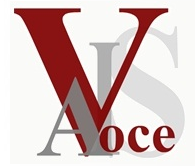Tema del Convegno: “Aspetti prosodici e testuali del raccontare: dalla letteratura orale al parlato dei media”
Sono ben note le differenze tra un testo scritto e un testo orale, tra il parlato di laboratorio e il parlato spontaneo e tra questo e il parlato trasmesso. Su queste nei decenni appena trascorsi si è concentrata l'attenzione di linguisti e fonetisti impegnati a catturare tutti i tratti di differenziazione, da quelli strutturali macro- e micro-testuali, a quelli ritmico-intonativi, a quelli che assicurano il passaggio dal parlato iperarticolato a quello ipoarticolato, soffermandosi sul ruolo degli indici di fluenza e sui segnali che garantiscono la coesione e la connessione del programma enunciativo di un parlante e della sua realizzazione finale. La riflessione parte dal cambiamento delle condizioni comunicative che consegue alla diffusione della scrittura rispetto al parlato puro - all’"oralità primaria", non condizionata da questo straordinario mezzo - e si sofferma nel corso del XX secolo su un'"oralità di ritorno", quella favorita non più soltanto dai nuovi media (radio, telefono, TV), ma - alle soglie del 2000 - dalla connettività e dall'operatività consentite dai nuovi mezzi tecnologici. Come parlano i cittadini del terzo millennio? Come raccontiamo le nostre storie? Lo facciamo allo stesso modo degli informatori analfabeti cui si rivolgeva l'intervistatore o il dialettologo degli anni ’30 o come gli speaker radio-televisivi che sono entrati progressivamente nelle nostre case? Raccontiamo le nostre storie come i parlanti di quelle culture prevalentemente orali oppure costruiamo il nostro eloquio in un modo nuovo? Hanno ancora un ruolo mnemotecnico le formule e le figure testuali nella narrativa orale? Quanto gli aspetti ritmico-intonativi contribuiscono a caratterizzare il parlato di speaker e annunciatori meno convenzionali? A queste domande non è facile dare risposte usando gli strumenti che possiamo imparare a usare con una formazione che, per quanto sempre più interdisciplinare - tra linguistica, sociologia, medicina e ingegneria -, dimentichi gli aspetti etnografici e antropologici più rilevanti a questo scopo. Allo stesso modo, non è possibile riflettere obiettivamente su questi temi senza lasciarsi influenzare da una posizione di eccessivo coinvolgimento da parte del ricercatore e trascurando i cambiamenti nella "mentalità" dei parlanti derivanti dalla loro esposizione a stimoli culturali diversi e spesso, ormai, imprevedibili.
***
Oltre ai temi scientifici normalmente discussi nei convegni AISV e
abitualmente destinati alle sessioni a tema libero si invita all'invio di comunicazioni nei seguenti settori:
- Parlato mediatico
- Parlato narrativo
- Linguistica testuale
- La lingua della letteratura popolare
- Etnomusicologia
- Il parlato di soggetti con disturbi logopedici
- Fonodidattica
- Caratterizzazione della lingua e del parlante
***
Conference Topic: “Prosodic and textual aspects of narratives: from oral literature to the speech of the media”
Differences between written and spoken texts are well-known. Laboratory and spontaneous speech show a certain amount of linguistic differences as well as different properties affect the language used by the media. In the last decades the attention of linguists and phoneticians focused on these aspects. Many of them were engaged in the search of the most salient features of these distinctions: from macro- and micro-textual characteristics to facts related to rhythm and intonation, including those phenomena which characterise hyperarticulated and hypoarticulated speech. Many phoneticians studied the role played by such indexes as fluency rate, whereas a number of linguists focused on those signals which ensure the cohesion and connexion of the utterances programmed by speakers and their final realisations. In the 20th century, a reflection started from the observation of the change occurred to communicative conditions following the diffusion of writing, as compared to pure speech, the “primary orality” not conditioned by this extraordinary means, and led to the consideration of a “back orality”, the one which has been favoured not only by the new media (radio, telephone, TV), but - around 2000 - by the connectivity and the practicality allowed by new technological tools. How the citizens of the third millennium do they speak? How do we tell our stories? Do we speak the same way as illiterate informers used to do when speaking to the interviewers or to the dialectologue of the 30's or do we speak as radio- and TV speakers who progressively entered our home do it today? Do we tell stories as speakers of oral cultures are inclined to do or do we build our speech in a brand new way? Do mnemonic formulae and traditional textual figures still play a role in narratives? How much rhythm and intonation contribute to characterise professional and less conventional speakers? It is not easy to answer to these questions just using the scientific methods we learned to apply in the framework of a single discipline. It is not easy to do it even when an interdisciplinary approach is available bridging linguistic and engineering together with medical and social sciences: ethnographic and anthropological knowledge are relevant at this purpose. Moreover, it is not possible to investigate these topics without accounting for the influence induced by the personal involvement of the researcher and by neglecting the changes which occurred to the speakers' “mentality” deriving from their exposition to cultural stimuli always different and nowadays often unpredictable.
***
Besides the topics which are usually discussed in the AISV workshops
you are invited to submit abstracts in the following fields:
- The speech of the media
- The speech of narratives
- Textual Linguistics
- The Language of popular literature
- Ethnomusicology
- Narratives and speech pathology and Therapy
- Phonetic methods for teaching
- Speaker and language identification

